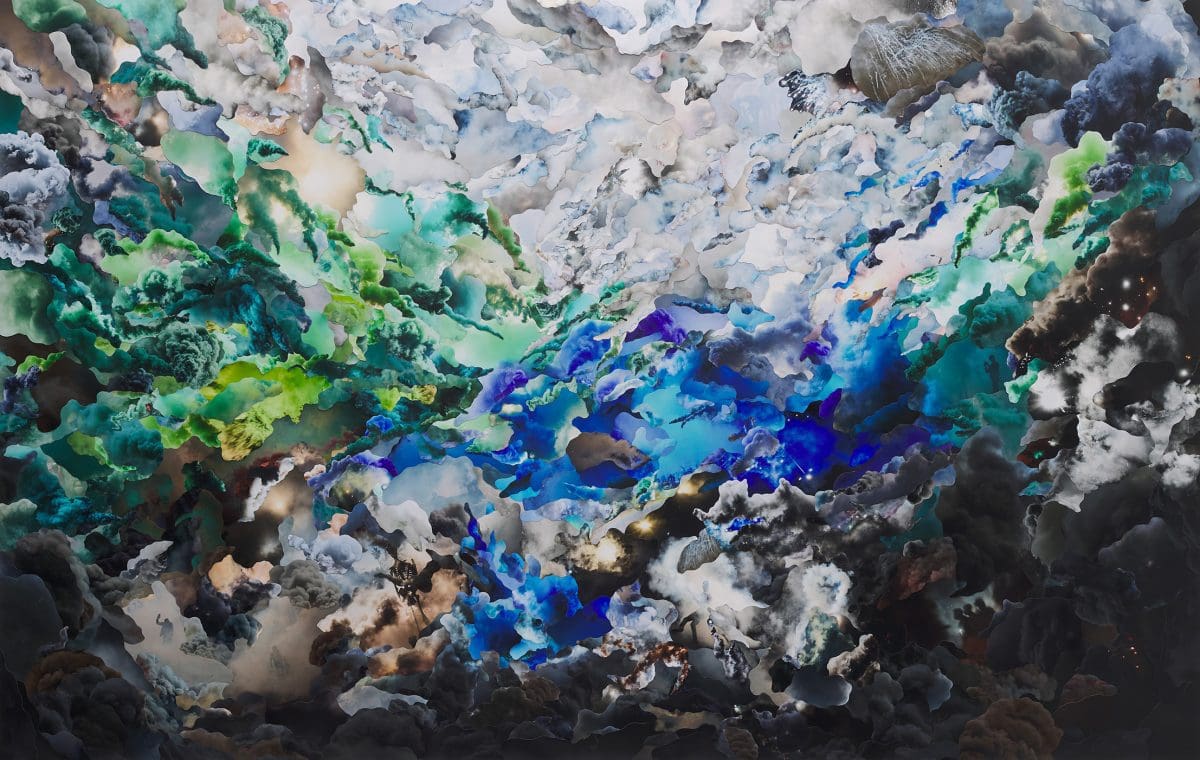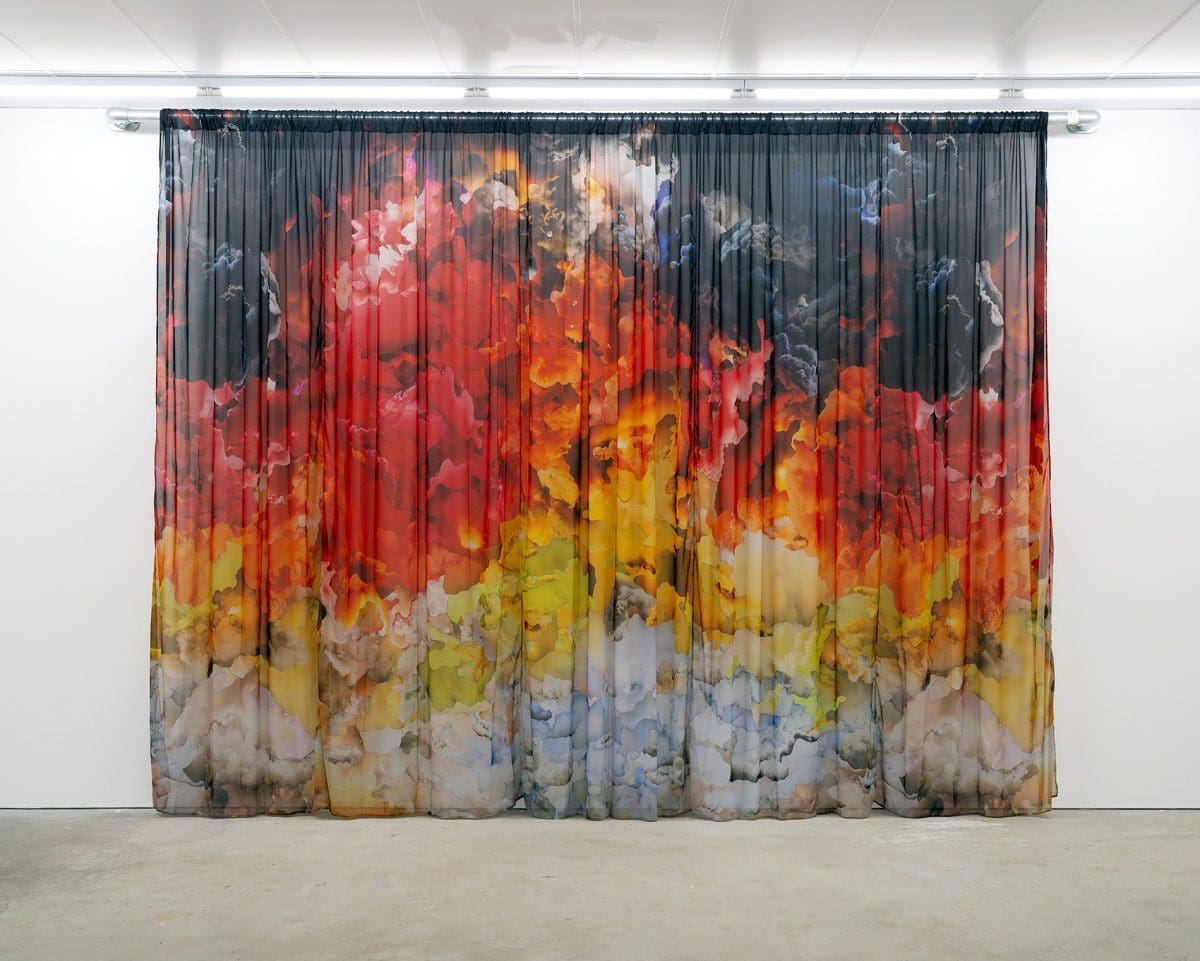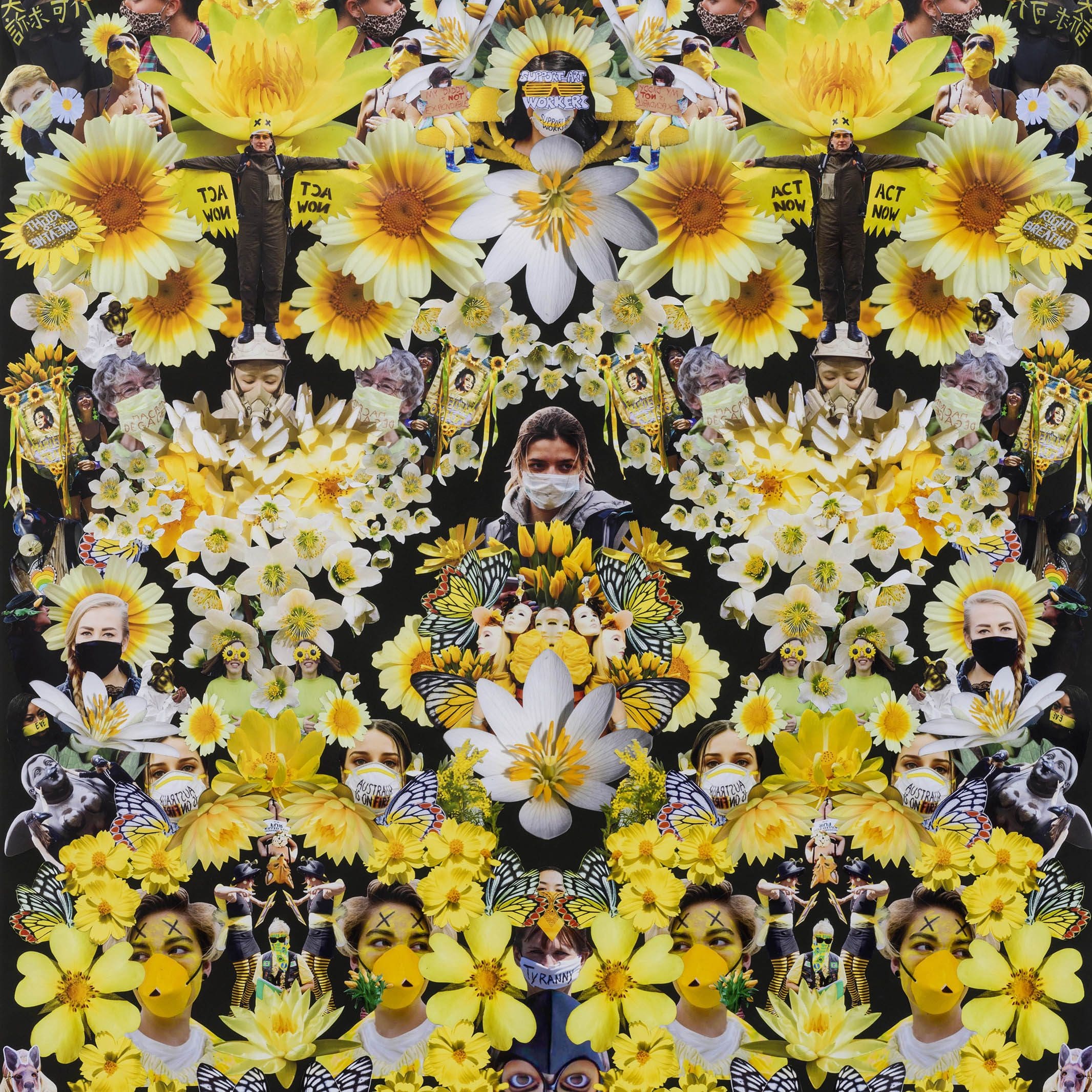
Finding New Spaces Together
‘Vádye Eshgh (The Valley of Love)’ is a collaboration between Second Generation Collective and Abdul-Rahman Abdullah weaving through themes of beauty, diversity and the rebuilding of identity.





Palawa artist Jemima Wyman creates art on political formations of our time, from protests to resistance movements. Using techniques of collage, Wyman arranges images of resistance into beguiling formations. Ahead of Wyman’s inclusion in Air at Brisbane’s Gallery of Modern Art, we asked her 20 questions.
Describe your practice in seven words?
Visually diagramming the depth of protective coverings.
Your first art love?
Yayoi Kusama, for her pataphysical universes and love of infinity. When I first encountered her work in the 90s, I didn’t understand the nuance or breadth of her practice. I was initially interested in the psychedelic mapping of self, space, and the collective, in relation to her unique polka dot camouflage. But the political dimension of her Happenings and her presence in the 1960s New York City art scene means a lot to me now.
I never thought I would actually get to see her work in-person, as I grew up in regional Queensland with no contemporary art until I travelled at age 15. So I cried when I encountered a mirror room at the Museum of Contemporary Art in Sydney. Since then, my work has been included in a group show with Kusama.
Best time of day to create?
5 to 7pm, when the day is shifting into night, especially straight after a cup of tea.
Organisation or chaos?
Both, simultaneously!
Do you remember the first protest you ever attended?
It was an anti-war protest in Brisbane in 2001; I painted my face with text and wore a fluorescent pink flower dress.
What do you think intrigues or moves you about acts of resistance?
The employment of visual and performative strategies that can have ramifications for human rights. It’s a space where a mask is not just a theatrical device—it can be a protective tool, for anonymity and to filter out tear gas.
I used to do performances as a part of my practice, but I think the space of protest is more interesting and complex. Protest is a high-risk performance. Protesters’ willingness to put their bodies on the line for their beliefs is always inspiring. I’m into the embodied-ness required by protest, and then the visual analysis of ingenious methods employed by protesters.

Do you find living between Brisbane and Los Angeles benefits your practice?
I find it both challenging and generative; definitely not easy.
The most interesting thing someone has said to you about your work?
It was actually a reductive and negative comment (that was false) about my work. However, that remark started a whole chain reaction in my practice, whereby I started to look for real world examples of masking and covering. Specifically, I look at how masking is used by people during conflict in order to have anonymity, while still desiring to be looked at and be heard.
As politically motivated as your works are, they’re also very enchanting—what’s the balance between a political image and an aesthetically appealing image?
Art’s strength is its ability to be more than one thing at a time. I don’t believe that politics and aesthetics are separate. I guess the balance comes when the viewer feels an awkwardness or internal conflict in relation to the work, and aren’t able to immediately make assumptions. I want viewers to have the experience of being more sensitive in their looking at protest. Representations of conflict can be seductive, and optical patterns have deeper meaning. Protesters are often using visually aggressive strategies to take up space and have their voice heard. Seduction is a device of warfare. I’ve read you have a tremendous archive of protest images.
Is this a digital or physical archive? And how is it organised?
My MAS-archive has been going since 2008; it’s housed both ways, although the digital is easier to track. I often use reverse image searches through Google or TinEye if there’s a problem tracking something. The physical archive is in clear boxes on shelves in my studio in Lincoln Heights, Los Angeles.
If you could collaborate with any artist, dead or alive, who would it be?
Collaboration is hard! I have a collaborative practice with Anna Mayer spanning 17 years, called CamLab. Friendship is an important foundation for our collaboration; it allows us to take risks with humour and social engagement that we wouldn’t do on our own. It takes so long to get to an interesting place of making with someone else, where the work does more than either of you can consciously predict. We have an ongoing workshop project remaking feminist artworks related to sexual assault in miniature, called ‘Reguarding Room’.
An art experience that’s stuck with you?
Watching Cameron Jamie’s Kranky Klaus at the Whitney Museum, alone in a dark screening room. The experience was sublime and terrifying. I had a heightened sensitivity to my surroundings.
Quick advice for young artists?
Make sure your work entertains, excites and surprises you—because that’s the only way to make it sustainable over the decades.
Best colour to create with?
Yellow (and black) in relation to creating aposematic patterns.
Your formative artistic influences?
All my formative experience has been in educational settings. Working with Mark Webb at Queensland University of Technology and then studying at California Institute of the Arts with Leslie Dick, Christine Wertheim, Charles Gaines and Michael Asher, and all my fellow students.
You’ve created works based on the masks and outfits of protestors—like the balaclavas of Pussy Riot, for example. But have you made something wearable for protestors?
Generally, when I protest I show my face and have a sign. However, at Occupy Los Angeles on the steps of City Hall, CamLab wore a 20-metre inhabitable length of fabric that other protesters cut their own head holes into and occupied with us. At other demonstrations I have participated in artists’ projects. Recently, at an anti-abortion rally ‘Bans Off Our Bodies’ in Los Angeles, I shook one of Elana Mann’s protest rattles very loudly against right-wing religious groups who attended. At the Women’s March in Los Angeles I participated in Lara Schnitger’s ‘Suffragette City’ procession.
Do you see art itself as a form of protest?
Occasionally
What is it about masking and camouflage that interests you in relation to power?
I started making feminist works in the mid-90s using my own body for performances. To overcome the objectification of the female body when performing, I started to cloak, exagerate, and extrude through fabric skins and masks. I was interested in how body coverings provided anonymity and power to the wearer in equalising the onlooker’s gaze. Patterned fabric and masks are a type of camouflage that attracts the eye but doesn’t compromise the wearer’s identity. So this train of thinking led me to look at real world instances of camouflage being used for survival by liberation armies, and then eventually global protest movements.
Your work in Air collages plumes of smoke from flares and deterrents during protests. Why these images?
I have been interested in protesters’ and liberation armies’ choice of ‘camouflage’ for a long time.
What are the options for protective coverings in conflict?
The smoke collages developed from observing the Yellow Vests movement and their use of smoke in protest. Also I remembered that the French origin of the word ‘camouflage’ is camouflet, meaning ‘whiff of smoke in the face’. The work wrestles with more than just these starting points…
When you follow protests across the world, relating to so many injustices, does it leave you feeling hopeful or despairing?
A mix of despairing hope.
Air
Gallery of Modern Art (Brisbane QLD)
26 November—23 April 2023.
This article was originally published in the November/December 2022 print edition of Art Guide Australia.